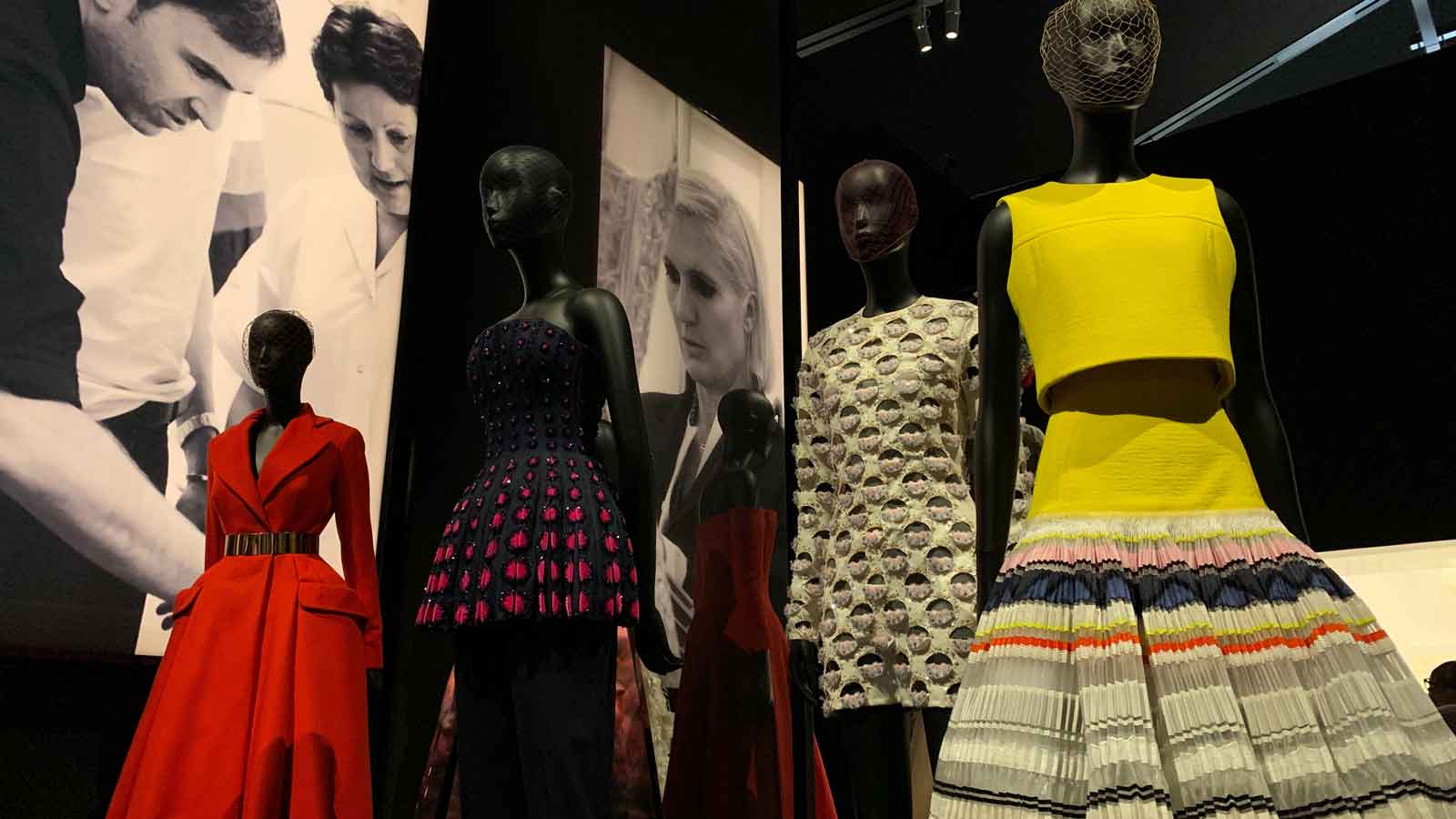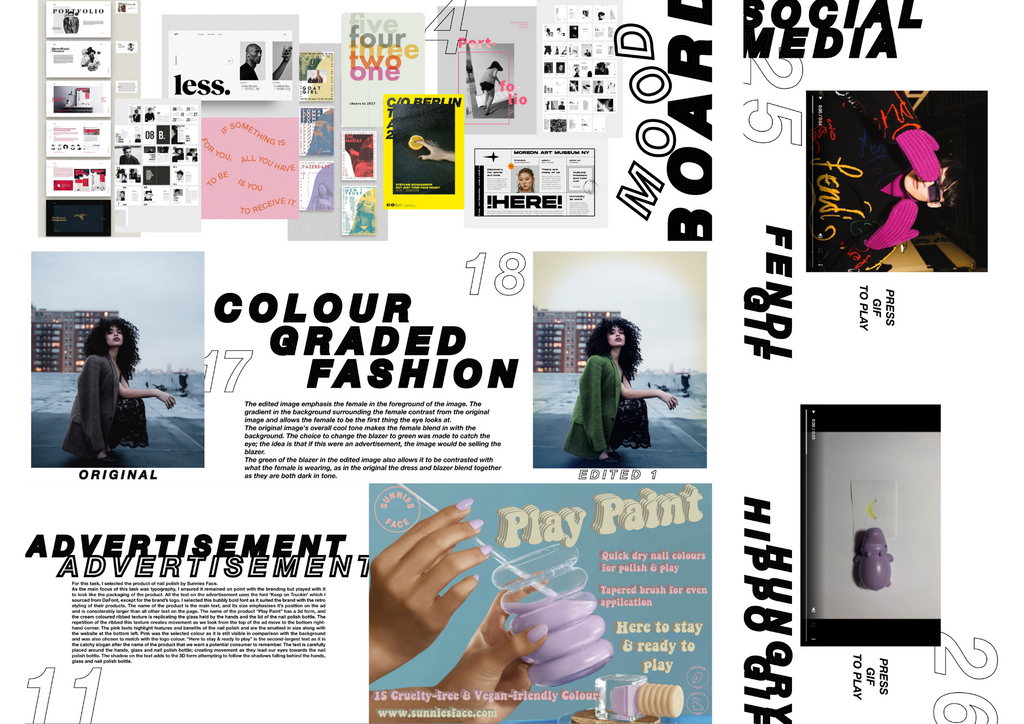Fashion marketers promote clothing and accessories to target audiences. They create campaigns that highlight brand identity and trends.
Fashion marketing involves understanding consumer behavior and market trends. Marketers use various strategies to attract and retain customers. They work on brand positioning, social media campaigns, and influencer collaborations. Analyzing market data helps them tailor their approaches. They also oversee advertising and public relations efforts.
Their goal is to boost brand visibility and drive sales. Fashion marketers must stay ahead of trends and adapt quickly. Creativity and analytical skills are essential in this role. They ensure that marketing efforts align with brand values and resonate with the target audience. Effective fashion marketing can significantly impact a brand’s success.
Introduction To Fashion Marketing
Fashion marketing is the heart of the fashion industry. It connects brands with consumers. Fashion marketers create buzz around new collections. They use various strategies to promote fashion products. Their work influences what people wear.
Role In The Fashion Industry
Fashion marketers play a crucial role. They identify the latest trends. They understand consumer behavior. They create effective marketing campaigns. They use social media, magazines, and events to promote brands. Fashion marketers collaborate with designers and retailers. This ensures products reach the right audience.
Importance Of Fashion Marketing
Fashion marketing is vital for brand success. It increases brand awareness. It drives sales. Fashion marketers create brand loyalty. They help brands stand out in a crowded market. Effective marketing can make or break a fashion brand. It ensures the brand’s message reaches its target audience.
- Brand Awareness: Fashion marketers promote new collections.
- Sales Growth: They drive sales through strategic campaigns.
- Brand Loyalty: They create a loyal customer base.
- Market Positioning: They position the brand in the market.

Market Research
Market Research is a fundamental aspect of fashion marketing. It involves gathering data to understand the market landscape. This helps fashion marketers make informed decisions and develop strategies.
Identifying Trends
Fashion marketers must stay ahead of the curve. They identify emerging trends by analyzing fashion shows, social media, and industry reports. This helps them understand what styles and products are gaining popularity.
- Fashion Shows: Observing runway shows for upcoming trends.
- Social Media: Monitoring platforms like Instagram and TikTok for popular styles.
- Industry Reports: Reading reports from fashion analysts and experts.
Using these sources, fashion marketers predict future trends. This allows brands to create products that consumers will love.
Understanding Consumer Behavior
Fashion marketers need to know what drives consumer choices. They study purchasing habits, preferences, and feedback. This helps them tailor their marketing strategies effectively.
| Method | Purpose |
|---|---|
| Surveys | Gathering direct feedback from consumers. |
| Focus Groups | Getting in-depth opinions from target audiences. |
| Sales Data | Analyzing past purchases to spot patterns. |
By understanding consumer behavior, fashion marketers can create campaigns that resonate. This increases the chances of success for fashion brands.
Brand Development
Brand Development is a critical aspect of fashion marketing. It’s about creating a unique identity that sets a brand apart. This involves several key activities, from establishing a brand’s visual elements to fostering a loyal customer base.
Creating A Brand Identity
Fashion marketers start by creating a brand identity. This identity includes the brand’s logo, colors, and fonts. These elements should be consistent across all marketing materials.
Marketers also define the brand’s voice and personality. Is the brand edgy, elegant, or casual? This personality should resonate with the target audience.
They also create a unique selling proposition (USP). This USP tells customers why they should choose this brand over others.
Building Brand Loyalty
After establishing a brand identity, fashion marketers focus on building brand loyalty. Loyal customers are valuable because they are more likely to make repeat purchases.
Marketers use various strategies to build loyalty:
- Engaging social media content
- Exclusive offers for repeat customers
- Personalized email marketing
They also create communities around the brand. This could be through social media groups or brand ambassador programs.
Fashion marketers also monitor customer feedback. They use this feedback to improve products and services continuously.
| Activity | Description |
|---|---|
| Visual Elements | Logos, colors, and fonts |
| Brand Voice | Personality and tone |
| USP | Unique Selling Proposition |
| Customer Engagement | Social media content and offers |
| Feedback Monitoring | Improving based on customer input |
Product Promotion
Fashion marketers play a key role in product promotion. They use unique strategies to capture customer interest. Successful promotion ensures products reach the right audience. This section explores two primary methods: advertising strategies and social media campaigns.
Advertising Strategies
Fashion marketers employ various advertising strategies to promote products. They create eye-catching ads that appeal to target audiences. These ads can be found in magazines, online, and on billboards.
A common method is using influencer partnerships. Influencers wear and promote the products. This method reaches their large follower base.
Fashion marketers also use email marketing. They send promotional emails to potential customers. These emails include discounts and new product announcements.
Here are some common advertising methods used:
- Print ads in fashion magazines
- Online ads on fashion websites
- Billboard ads in high-traffic areas
- Influencer partnerships
- Email marketing
Social Media Campaigns
Social media is a powerful tool for fashion marketers. It allows them to reach a wide audience quickly. They create engaging content to attract followers and potential customers.
Marketers use platforms like Instagram, Facebook, and Twitter. They post pictures, videos, and stories. These posts highlight new products, sales, and events.
Fashion marketers also use social media ads. These ads target specific demographics. They ensure the right people see the products.
Here are some common social media strategies:
- Posting high-quality images and videos
- Running targeted social media ads
- Engaging with followers through comments and messages
- Hosting live events and Q&A sessions
- Collaborating with social media influencers
Effective social media campaigns can significantly boost product visibility and sales.
Collaborations And Partnerships
Fashion marketers understand the power of collaborations and partnerships. These strategies enhance brand visibility. They also expand reach and create buzz. Below, we delve into two critical aspects: working with influencers and strategic partnerships.
Working With Influencers
Influencers have a significant impact on fashion marketing. They connect brands with their large, engaged audiences. Here’s how fashion marketers work with influencers:
- Identify relevant influencers who align with the brand’s values.
- Negotiate terms and deliverables for the collaboration.
- Create compelling content that resonates with the target audience.
- Track performance metrics such as engagement and reach.
Influencers can range from micro-influencers with a smaller, niche following to mega-influencers with millions of followers. The choice depends on the campaign goals and budget. Collaborating with influencers helps brands tap into new customer segments and build trust through authentic endorsements.
Strategic Partnerships
Strategic partnerships involve collaborating with other brands or organizations. These partnerships can take various forms:
| Type of Partnership | Example |
|---|---|
| Co-branding | Two brands create a product together. |
| Event Sponsorship | Brands sponsor fashion shows or events. |
| Content Collaboration | Brands produce joint marketing content. |
Strategic partnerships can amplify a brand’s reach. They also provide access to new markets and resources. These collaborations can enhance brand credibility and introduce innovative products or campaigns.
Fashion marketers must carefully choose partners. The partnership should align with the brand’s image and goals. Successful collaborations can lead to long-term relationships and mutual growth.
Event Planning
Fashion marketers are experts in event planning. They create and manage events to showcase fashion brands. These events attract media attention and engage customers. Two popular types of events are fashion shows and pop-up events.
Fashion Shows
Fashion shows are grand events where new collections are displayed. They require meticulous planning and coordination. Fashion marketers work with designers, models, and venues. They ensure everything runs smoothly.
Key tasks include:
- Choosing the right venue
- Selecting models
- Coordinating with designers
- Managing invitations and RSVPs
Fashion shows create buzz and media coverage. They help introduce new trends and styles.
Pop-up Events
Pop-up events are temporary retail spaces. They allow brands to connect directly with consumers. These events are usually short-term but impactful.
Fashion marketers handle:
- Location scouting
- Setting up displays
- Organizing interactive experiences
- Promoting the event on social media
Pop-up events generate excitement and exclusivity. They help brands reach new audiences.
| Event Type | Main Activities | Impact |
|---|---|---|
| Fashion Shows | Venue selection, Model coordination, Invitations | Media buzz, Trendsetting |
| Pop-Up Events | Location scouting, Display setup, Social media promotion | Consumer engagement, Brand exposure |
Sales Strategies
Fashion marketers develop sales strategies to boost brand visibility. They aim to increase revenue and engage customers. These strategies often include both retail tactics and e-commerce solutions.
Retail Tactics
Fashion marketers use various retail tactics to draw in-store traffic. They design eye-catching window displays. This helps to attract customers from the street.
Promotions and discounts are common retail tactics. Special offers can drive sales and clear old stock. Hosting events in stores can also engage shoppers.
| Retail Tactic | Purpose |
|---|---|
| Window Displays | Attract foot traffic |
| Promotions | Boost sales |
| In-store Events | Engage customers |
E-commerce Solutions
Fashion marketers also focus on e-commerce solutions. They optimize websites for better user experience. Fast-loading pages and easy navigation are essential.
Online promotions and social media campaigns drive traffic. Influencer partnerships can also boost online visibility. Email marketing is another effective tool.
- Website Optimization
- Social Media Campaigns
- Influencer Partnerships
- Email Marketing
Analyzing Success
Fashion marketers need to know if their efforts work. They do this by analyzing success. It means looking at data and feedback. Let’s dive into how they do it.
Metrics And Kpis
Metrics and KPIs help measure success. KPIs stand for Key Performance Indicators. These are numbers that show how well you are doing. Here are some important KPIs in fashion marketing:
- Sales Growth: This measures how fast sales are increasing.
- Customer Acquisition Cost (CAC): This shows how much it costs to get a new customer.
- Return on Investment (ROI): This tells you how much profit you make from your marketing spend.
- Customer Lifetime Value (CLV): This calculates the total value a customer brings over time.
These KPIs help fashion marketers understand what is working. They can then make better decisions.
Customer Feedback
Customer feedback is very important. It tells marketers what customers like or dislike. Feedback can come from different places:
- Surveys: These are questions sent to customers to get their opinions.
- Reviews: Customers leave reviews on websites and social media.
- Focus Groups: Small groups of customers share their thoughts in a discussion.
Marketers use this feedback to improve their products. They can also adjust their marketing strategies.
| Feedback Source | Usefulness |
|---|---|
| Surveys | High |
| Reviews | Medium |
| Focus Groups | High |
Analyzing customer feedback is key. It helps in understanding what customers want. This makes the marketing efforts more effective.
Future Trends In Fashion Marketing
The future of fashion marketing is evolving rapidly. Marketers must keep up with the latest trends. These trends shape the industry’s future and customer expectations. Sustainability and technology integration are key focus areas.
Sustainability
Sustainability is more than a buzzword. It’s a necessity in fashion marketing. Brands are adopting eco-friendly practices. These practices include using recycled materials and reducing waste.
Many customers prefer sustainable brands. They check labels for eco-friendly materials. They want companies to use less water and chemicals. This shift is driving change in the industry.
Fashion marketers promote these green initiatives. They highlight the brand’s commitment to the planet. This builds trust and loyalty among customers.
Technology Integration
Technology is transforming fashion marketing. It enhances the shopping experience. Brands use AI to personalize customer interactions. AI recommends products based on past purchases.
Virtual reality (VR) is another exciting trend. Shoppers can try on clothes without leaving home. This makes online shopping more engaging.
Social media plays a crucial role too. Brands use platforms like Instagram and TikTok. They reach younger audiences and create viral content. Influencers help spread the word quickly.
Here’s a quick look at how technology is used in fashion marketing:
| Technology | Application |
|---|---|
| AI | Personalized recommendations |
| VR | Virtual fitting rooms |
| Social Media | Influencer marketing |
Fashion marketers must stay updated with these trends. They need to adapt quickly to remain competitive. The future looks promising for those who embrace sustainability and technology.


Frequently Asked Questions
What Do Fashion Marketers Do Daily?
Fashion marketers develop and implement marketing strategies. They analyze market trends, manage social media, and coordinate advertising campaigns. They also collaborate with designers and sales teams.
How Do Fashion Marketers Target Audiences?
Fashion marketers identify target audiences through market research. They use data analytics, customer feedback, and trends to tailor campaigns. This ensures effective communication and engagement.
Why Are Fashion Marketers Important?
Fashion marketers play a vital role in brand awareness. They drive sales and build customer loyalty. Their strategies help brands stand out in a competitive market.
What Skills Do Fashion Marketers Need?
Fashion marketers need creativity, communication, and analytical skills. They must understand market trends and consumer behavior. Proficiency in digital marketing tools is also essential.
Conclusion
Fashion marketers play a crucial role in connecting brands with consumers. They use strategic planning, creativity, and data analysis. Understanding their responsibilities can help businesses thrive. By leveraging their skills, fashion marketers drive brand awareness and sales. Stay tuned for more insights into the dynamic world of fashion marketing.
